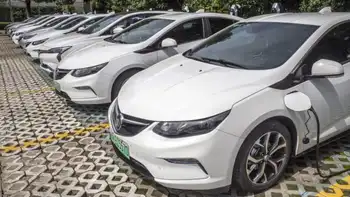OSU student exercise to generate power
By Associated Press
CSA Z463 Electrical Maintenance
Our customized live online or in‑person group training can be delivered to your staff at your location.

- Live Online
- 6 hours Instructor-led
- Group Training Available
It is among the first universities in the United States to do so.
With new technology developed by a Florida firm, OSU has retrofitted 22 elliptical exercise machines in its student fee-funded Dixon Recreation Center and already is collecting the power produced by students.
The effort will produce an estimated 3,500 kilowatt hours of electricity in a year, according to Brandon Trelstad, the universityÂ’s sustainability coordinator.
Its output could be equivalent to what is needed to power a small, very efficient house, Trelstad said. "Our ultimate goal is to maximize both the real power output of the system and the learning opportunities gained by having it at OSU."
In 2007, OSU students voted to tax themselves $8.50 per student per term to purchase renewable energy for the campus. Since then, about three-quarters of the universityÂ’s electricity has come from renewable production.
"OSU students have demonstrated how big student power can be on campus," said Matthew Pennington, chief of staff for the Associated Students of Oregon State University. "It was a grass roots movement that helped OSU turn green and this project moves it forward even farther."
The ReRev technology features a system with a pending patent called ReCardio that captures and converts the otherwise-counterproductive heat energy from exercise machines.
Though some businesses or individuals have dabbled with this type of energy conversion, a program on this scale is unusual, Trelstad said.
"A battery-free system like this, tied to the grid, is quite rare," Trelstad said. "In fact, weÂ’re informed by ReRev which has done extensive market research that this is the largest installation of its kind in the world."
"Capturing electricity from exercise machines represents a small, but potentially widely replicable source of energy," said Jan Schaeffer, special projects manager for Energy Trust.
While students pedal, a real-time display screen shows momentary power production, production to date, production peaks and other data.











